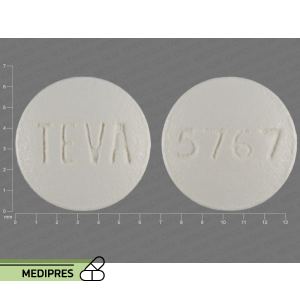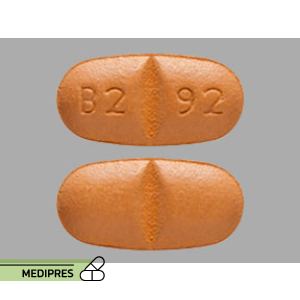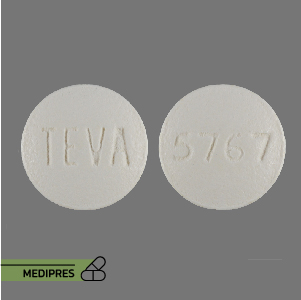
Nystatin Tablets
23 June, 2023
Oxcarbazepine Suspension
23 June, 2023Olanzapine Orally Disintegrating Tablets
Generic name:
Olanzapine
Drug class:
Atypical antipsychotic (second-generation antipsychotic)
Dosage form:
- Orally disintegrating tablets
- Tablets (non-disintegrating form – for reference only)
Root of administration:
Oral
Dose:
- Adults with schizophrenia: Usually 5 to 20 mg once daily; initial dose commonly 10 mg/day
- Adults with bipolar disorder: 10 to 20 mg/day; may be adjusted based on response and tolerability
- Elderly or debilitated patients: Dose adjustment recommended; often lower starting dose
- Use in adolescents (for schizophrenia or bipolar I disorder): 2.5 to 20 mg/day; individualized based on clinical response
- Titration: May vary by indication and patient tolerance; dose adjustments should be gradual
- Maximum recommended dose: Typically 20 mg/day
Mechanism of action:
Olanzapine is an antagonist of multiple neurotransmitter receptors in the brain, including dopamine D1–D4, serotonin 5-HT2A/2C, 5-HT3, 5-HT6, histamine H1, muscarinic M1–M5, and alpha-1 adrenergic receptors. The antagonism of dopamine and serotonin receptors contributes to its antipsychotic and mood-stabilizing effects by balancing neurotransmitter pathways implicated in schizophrenia and bipolar disorder.
Drug usage cases:
- Schizophrenia (acute and maintenance treatment)
- Bipolar disorder: acute manic or mixed episodes
- Bipolar disorder: maintenance treatment to delay recurrence of mood episodes
- Schizoaffective disorder
- Off-label: Treatment-resistant depression adjunct, agitation in dementia (use with caution)
Drug contra indications:
- Known hypersensitivity to olanzapine or any formulation excipients
- Patients with comatose states or severe central nervous system depression
- Concomitant use with or within 14 days of discontinuing monoamine oxidase inhibitors (MAOIs)
- Severe cardiovascular disease may be a relative contraindication; proceed with caution
Side effects:
- Common:
- Weight gain
- Somnolence/sedation
- Dizziness
- Increased appetite
- Dry mouth
- Constipation
- Orthostatic hypotension
- Metabolic:
- Hyperglycemia and new onset or worsening diabetes mellitus
- Hypercholesterolemia and hypertriglyceridemia
- Elevated liver enzymes
- Neurologic:
- Extrapyramidal symptoms (rare compared to typical antipsychotics)
- Tardive dyskinesia (potentially irreversible)
- Neuroleptic malignant syndrome
- Prolonged QT interval (rare)
- Hematologic:
- Leukopenia, neutropenia, agranulocytosis (rare)
- Endocrine:
- Increased prolactin levels
- CNS:
- Headache
- Restlessness
- Other:
- Fever
- Peripheral edema
- Seizures (rare)
Warnings:
- Elderly patients with dementia-related psychosis treated with antipsychotics are at increased risk of death; olanzapine is not approved for this use
- Risk of metabolic changes including hyperglycemia, diabetes mellitus, dyslipidemia, and weight gain; monitor glucose and lipid levels
- Orthostatic hypotension and syncope risk, especially during initial dosing or dose increases
- Potential for neuroleptic malignant syndrome; discontinue drug immediately if suspected
- Tardive dyskinesia: may be irreversible; use lowest effective dose for shortest duration possible
- Seizure threshold may be lowered; caution in patients with seizure disorder
- Use caution in patients with cardiovascular disease, history of stroke, or risk factors for stroke
- Monitor for signs of leukopenia/neutropenia, especially in patients with history of drug-induced leukopenia
- Avoid abrupt discontinuation; taper dose slowly to avoid withdrawal symptoms and exacerbation of underlying condition
- May impair judgment, thinking, or motor skills; caution patients about operating machinery or driving
- Use caution when co-administered with CNS depressants or other drugs affecting heart rhythm
Use during pregnancy or breastfeeding:
Olanzapine should be used during pregnancy only if the potential benefit justifies the potential risk to the fetus. There are limited data on the use of olanzapine in pregnant women. Animal studies have shown some risk of fetal harm. Neonates exposed to antipsychotic drugs, including olanzapine, during the third trimester may experience extrapyramidal and/or withdrawal symptoms post-birth.
During breastfeeding, olanzapine is excreted in human milk. The effects on the nursing infant are not fully known. Caution is advised; benefits of breastfeeding should be weighed against the mother’s need for olanzapine and potential adverse effects on the infant. Monitoring of the infant is recommended if breastfeeding during treatment.



